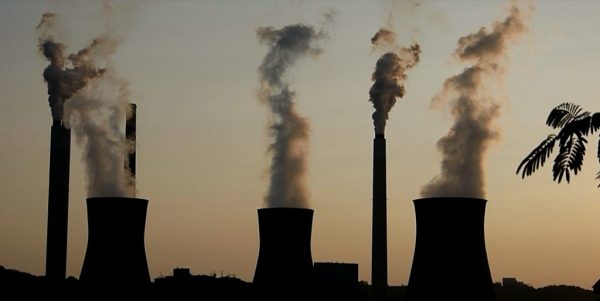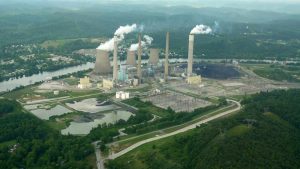
Language directly lifted from the 2015 Paris Climate Agreement states, “The Paris Agreement central aim is to strengthen the global response to the threat of climate change by keeping a global temperature rise this century below 2 degrees Celsius above preindustrial levels and to pursue efforts to limit the temperature increase even further to 1.5 degrees Celsius.”
Before exploring the possibility of achieving these lofty goals, it’s necessary to define some terms.
Preindustrial times are generally accepted to occur prior to approximately 1760.
The temperature of 1.5 degrees Celsius (C.) equals approximately 2.7 degrees Fahrenheit (F.) and 2 degrees C. equals approximately 3.6 degrees F. Two degrees C. above preindustrial levels, is a somewhat arbitrary limit, however, climate scientists generally agree that global temperature increases above this, “guardrail” level will result in catastrophic global climate change impacts.
Catastrophic climate change impacts include dangerous changes to all of earth’s major systems including: the hydrosphere, biosphere, atmosphere, and cryosphere.
Some important individual catastrophic impacts from just a 2 degree C. increase above preindustrial levels include:
- wiping out of virtually all tropical coral reefs;
- a 16% decrease in global wheat yields;
- a 6% decrease in corn yields;
- up to a 1.5 month increase in heatwaves;
- a greater frequency of 1000-year-flood events;
- and, perhaps up to a 10% extinction of all earth’s plant and animals.
(Sources: NASA’s article “Why a half-degree temperature rise is a big deal,” www.livescience.com’s “How would just 2 degrees of warming change the planet,” and previous UN Intergovernmental Panel on Climate Change (IPCC) reports).
 Knowing when to expect catastrophic levels of damage from human-caused climate change is important to policy makers, planners, emergency organizations, farmers, and many others. Despite the incomprehensible volume of scientific literature published concerning every imaginable aspect of climate change, very few studies are available regarding the number of years remaining until it is impossible to avoid human-caused catastrophic climate change from a 2 degrees C. temperature increase above preindustrial levels. A comprehensive study by the IPCC covering how long we have to avoid a 1.5 degree C. temperature increase is due out in September, 2018.
Knowing when to expect catastrophic levels of damage from human-caused climate change is important to policy makers, planners, emergency organizations, farmers, and many others. Despite the incomprehensible volume of scientific literature published concerning every imaginable aspect of climate change, very few studies are available regarding the number of years remaining until it is impossible to avoid human-caused catastrophic climate change from a 2 degrees C. temperature increase above preindustrial levels. A comprehensive study by the IPCC covering how long we have to avoid a 1.5 degree C. temperature increase is due out in September, 2018.
The lack of really accurate estimates of time remaining before the 2 degree C. threshold is reached is perfectly understandable. The process for developing future climate scenarios is extremely complicated. It involves creating mathematical models containing many millions of lines of code, inventing algorithms which must be adaptable to ever changing data, and many other such problems as unknown variables. And, of course, the greatest unknown variable is the future direction of human nature.
A handy way of cutting through the complexity is the concept of carbon budget. This boils down to the fact that there is a finite amount of carbon (mostly as carbon dioxide and methane) we can pack into the atmosphere before a 1.5 degree C., 2.0 degree C. or a 3.0 degree C., etc.increase is reached. Determination of the number of years to reach these temperatures is a function of how fast we pump carbon into our atmosphere.
 A useful countdown carbon clock is available here. The clock is based on the assumption that greenhouse gas (GHG) emission rates will remain as they are today until the 2 degree C. threshold is reached. That’s reasonable, since even though the acceleration or rate of increase of GHG emissions appears to be near peaking in the last few years, total annual CO2 emissions are still more than 2 parts per millions (ppm) per year. In any case, the clock estimates that in just over 18.5 years we will have packed enough carbon into the atmosphere to get us to the 2 degree C. over preindustrial threshold.
A useful countdown carbon clock is available here. The clock is based on the assumption that greenhouse gas (GHG) emission rates will remain as they are today until the 2 degree C. threshold is reached. That’s reasonable, since even though the acceleration or rate of increase of GHG emissions appears to be near peaking in the last few years, total annual CO2 emissions are still more than 2 parts per millions (ppm) per year. In any case, the clock estimates that in just over 18.5 years we will have packed enough carbon into the atmosphere to get us to the 2 degree C. over preindustrial threshold.
In April 2017 carbonbrief.org published an article, “Analysis: Just four years left of the 1.5 C carbon budget.” Their analysis, which was based on IPCC carbon budgets and data and assuming current emission rates, was that keeping global temperatures below 1.5 degrees C. beyond preindustrial levels after 4 more years wouldn’t be feasible.
Another study published in the journal Nature Climate Change on July 31, 2017 maintained that essentially we had pretty much already busted the carbon budget for 1.5 degrees C. and we only had a 1% chance of stabilizing temperatures at that level. The same study noted that stabilizing at 2 degrees C. had about a 5% chance and was unlikely.
On June 12, 2018 the Citizens Climate Lobby of Charleston, WV hosted a public presentation given by Dr. Micheal Mann and Dr. David Titley. Dr. Mann is a climatologist and Distinguished Professor of Atmospheric Science at Penn State University as well as Director of their Earth System Science Center. Retired Rear Admiral Dr. Titley is a meteorologist and Founding Director of the Center for Solutions to Weather and Climate at Penn State University. They often appear together in presentations to educate the public regarding the reality of human-caused climate change.
I was fortunate enough to ask the pair the following question. If we assume a middle of the road GHG emissions scenario, what range of years will global temperature reach 2 degrees Celsius above preindustrial levels? They didn’t exactly answer my question, but Dr. Mann did note that 1.5 degrees C. was, “probably off the table” and that 2 degrees C. was, “not likely.” Dr. Titley noted that, 2.1 or 2.2 degrees is better than three or four degrees.
The bottom line is we are probably destined to experience a degree of catastrophic human-caused climate change, and all we now can choose is how bad the catastrophe will eventually be.
One thing you can do locally is join in OVEC’s work to oppose the proposed, massive Appalachian Storage Hub/petrochemical complex,which, if built, could become a major source of greenhouse gases. Contact at info@ohvec.org to get involved.

Mel Tyree is a retired geologist; he worked as an environmental consultant (conducting investigations of hazardous waste sites) and as a geologist for the West Virginia Department of Environmental Protection.










One thing rarely mentioned in these discussions is that the cooling effect from Asian smog is estimated at about one degree Celsius–which means that if we stopped all GHG emissions tomorrow, we’d actually soon right past the 2 degree mark, as the loss of the cooling effect from smog (mostly generated by the same emissions that cause warming) would quickly take effect I don’t think it’s likely that we can somehow stop the bad effects of these emissions without also terminating the cooling effect–which surely means that 2 degrees and more is already baked into the cake. Tyree says IPCC is preparing a report about the timeline–but I’ve read that their reports feature multiple scenarios and ALL the ones that end up below 2 degrees assume that we will eventually produce “negative emissions”–meaning some kind of reckless experimentation with geoengineering–after overshooting the limits. So they don’t think reining ourselves in short of catastrophic emissions is possible, just that we’ll inevitably resort to geoengineering and if if we’re lucky it’ll work and not produce effects that are even worse.